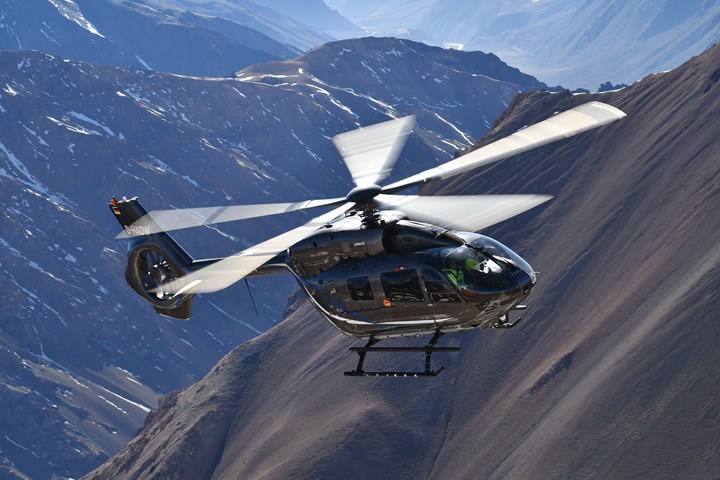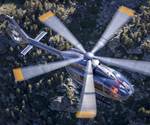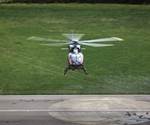Five-bladed H145 receives type certification by EASA
With several test flights under its belt and an EASA certification, Airbus is prepping the H145 for customer deliveries.

Source | Airbus
(Donauwörth, Germany) reported on June 19 that its composites-intensive five-bladed H145 helicopter has been certified by the European Union Aviation Safety Agency (EASA), clearing the way for customer deliveries towards the end of summer 2020. The company says the certification covers the full range of capabilities, including single-pilot and instrument flight rules (IFR) and single engine operations (Cat.A/VTOL), along with night vision goggles capability.
The new version of Airbus’ H145 light twin-engine helicopter was unveiled at Heli-Expo 2019 in Atlanta, with launch customers announced for almost every market segment. Prior to the successful high-altitude test campaign in South America, the new H145 performed several test campaigns including in Spain at medium altitudes and Finland for cold weather.
According to Airbus, this latest upgrade of the H145 family adds an innovative five-bladed rotor to the multi-mission H145, increasing the useful load of the helicopter by 150 kilograms (330 pounds). Further, the simplicity of the bearingless main rotor design is said to ease maintenance operations, further improving the benchmark serviceability and reliability of the H145, while improving ride comfort for both passengers and crew.
Powered by two Arriel 2E engines, the H145 is equipped with full authority digital engine control (FADEC) and the Helionix digital avionics suite. It includes a high performance 4-axis autopilot, increasing safety and reducing pilot workload. Its low acoustic footprint makes the H145 the quietest helicopter in its class.
Certification by the Federal Aviation Administration will follow later this year. The certification for the military version of the five-bladed H145 will be granted in 2021.
Related Content
-
Infinite Composites: Type V tanks for space, hydrogen, automotive and more
After a decade of proving its linerless, weight-saving composite tanks with NASA and more than 30 aerospace companies, this CryoSphere pioneer is scaling for growth in commercial space and sustainable transportation on Earth.
-
The potential for thermoplastic composite nacelles
Collins Aerospace draws on global team, decades of experience to demonstrate large, curved AFP and welded structures for the next generation of aircraft.
-
The next-generation single-aisle: Implications for the composites industry
While the world continues to wait for new single-aisle program announcements from Airbus and Boeing, it’s clear composites will play a role in their fabrication. But in what ways, and what capacity?






